Explosives Market Overview:
The global explosives market is witnessing steady growth, fuelled by increasing demand in sectors such as mining, construction, defence, and manufacturing. This market encompasses a variety of explosives, including industrial, military, and consumer fireworks. Our report offers an in-depth analysis of procurement trends, highlighting strategies for cost reduction, safety adherence, and the integration of advanced technologies to improve production and operations.
Looking ahead, key challenges in explosives procurement include managing regulatory requirements, ensuring product safety, securing the supply chain, and addressing environmental concerns. The use of digital tools for monitoring and tracking, along with strategic sourcing, is essential to optimizing procurement processes and maintaining long-term industry competitiveness. As global demand continues to grow, businesses are using market intelligence to boost operational efficiency and reduce risks.
- Market Size: The global Explosives market is projected to reach USD 263.3 billion by 2035, growing at a CAGR of approximately 5.50% from 2025 to 2035.
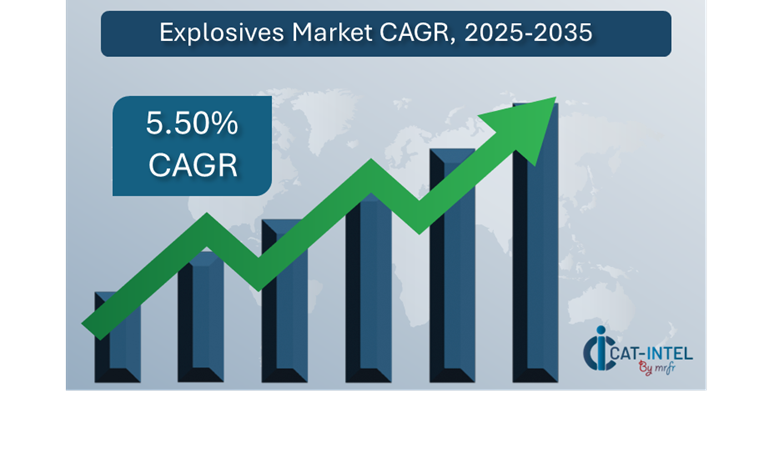
- Sector Contributions: Growth in the explosives market is driven by:
- Mining and Construction Demand: As mining and construction projects increase, there's a higher need for explosives, driving demand for better supply chain management and efficient inventory tracking.
- Defence and Military Expansion: With growing defence budgets and military needs, there's a rising demand for specialized explosives solutions in both tactical and strategic operations.
- Technological Transformation: New technologies like AI, machine learning, and automation are making it easier to produce explosives more efficiently, helping with everything from predictive maintenance to real-time supply chain tracking.
- Innovations: Companies are increasingly turning to customizable explosives solutions, allowing them to pick and choose the specific products and services they need, which helps save costs and simplify operations.
- Investment Initiatives: To lower costs and improve flexibility, businesses are investing in technology like cloud-based systems and remote-controlled detonation tools, making it easier to manage inventory and reduce infrastructure costs.
- Regional Insights: Asia Pacific and North America are major players in the global explosives market, thanks to their strong industrial sectors, growing defence investments, and adoption of cloud technology to track and manage explosives.
Key Trends and Sustainability Outlook:
- Cloud Integration: More companies are adopting cloud-based solutions for managing explosives, which helps them scale easily, cut costs, and access data quickly for better decision-making.
- Advanced Features: New tech, including AI, IoT, and blockchain, is improving how explosives companies manage their operations, offering better automation, data transparency, and smarter decision-making.
- Focus on Sustainability: There's a growing emphasis on sustainability in explosives production, with companies using tech to better manage resources and comply with environmental regulations, reducing their impact on the environment.
- Customization Trends: More companies are looking for explosive’s solutions tailored to their specific needs, such as for mining, construction, or military purposes, helping them use explosives more efficiently.
- Data-Driven Insights: Companies are increasingly using advanced data analytics to improve demand forecasting, manage supply chains more effectively, and track performance, leading to better overall efficiency.
Growth Drivers:
- Digital Transformation: More explosives companies are embracing digital tools to boost productivity, streamline their operations, and improve safety measures.
- Demand for Process Automation: There's a growing need to automate tasks in the explosives industry, which helps cut down on errors, increase efficiency, and speed up repetitive work, making operations run smoother.
- Scalability Needs: Explosives businesses are looking for systems that can grow with them, ensuring everything continues to run smoothly and perform well as their operations expand.
- Regulatory Compliance: ERP systems are essential for explosives companies to stay on top of safety and environmental regulations, automating reporting and ensuring their data is accurate and up to standard.
- Globalization: As the demand for explosives grows worldwide, companies need solutions that can handle different currencies, international logistics, and ensure they meet global compliance standards.
Overview of Market Intelligence Services for the Explosives Market:
Recent reports have highlighted some major challenges in the explosives industry, such as high production costs, safety requirements, and the need for customized solutions. Market intelligence services provide valuable insights that help companies find ways to cut costs, improve supplier relationships, and streamline operations. These insights also help businesses stay compliant with industry regulations and ensure they maintain high-quality production while managing expenses effectively.
Procurement Intelligence for the Explosives Market: Category Management and Strategic Sourcing
In the explosives industry, companies are improving their procurement processes by analysing spending and tracking supplier performance. Strong category management and strategic sourcing help reduce costs while ensuring a steady supply of high-quality explosives. By using market intelligence, businesses can adjust their procurement strategies, negotiate better deals with suppliers, and secure a consistent, cost-effective supply of explosives.

Pricing Outlook for the Explosives Market: Spend Analysis
The pricing for explosives is expected to stay somewhat dynamic, with prices changing due to several factors. These include advancements in production technology, higher demand for specialized explosives, custom requirements, and differences in pricing by region. Additionally, the rising focus on safety features, automation, and meeting stricter regulations is driving up the cost of explosives.
Graph shows general upward trend pricing for Explosives Market and growing demand. However, there may be fluctuations influenced by economic conditions, technological advancements, and competitive dynamic
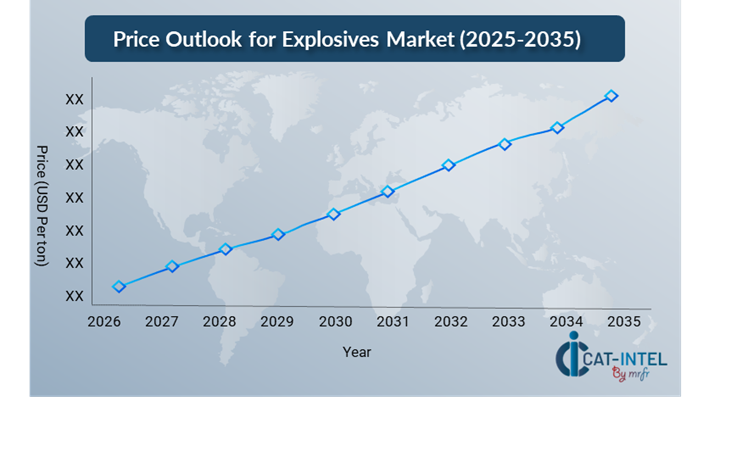
To keep costs under control, it's important for companies in the explosives industry to streamline their procurement processes, manage suppliers effectively, and use tailored solutions. Using digital tools for tracking market trends, forecasting prices with data analytics, and managing contracts more efficiently can help improve cost efficiency.
Building strong relationships with reliable suppliers, negotiating long-term contracts, and looking into flexible pricing options are smart ways to manage expenses. Even with these challenges, focusing on scalability, ensuring smooth operations, and using advanced tracking systems will be key to staying cost-effective and maintaining high operational standards.
Cost Breakdown for Explosives: Total Cost of Ownership (TCO) and Cost-Saving Opportunities:
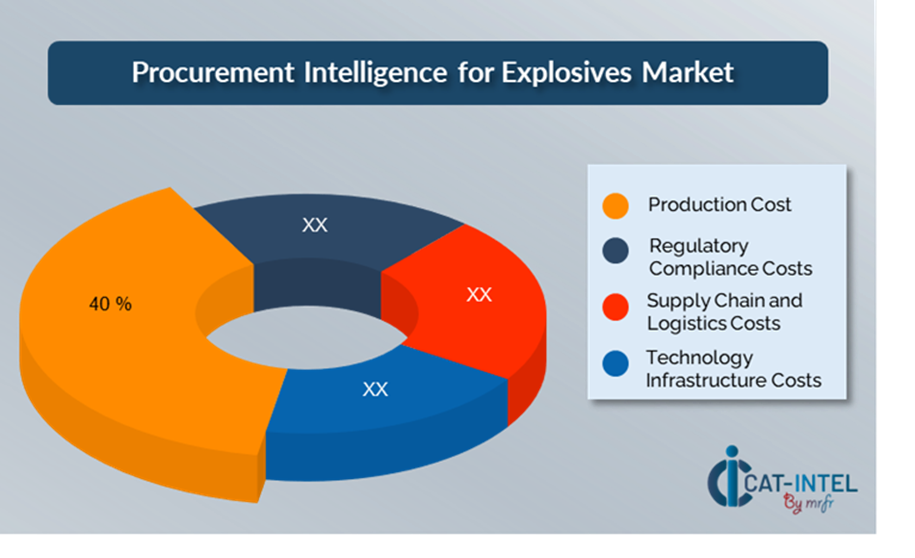
- Production Costs: (40%)
- Description: Production costs in the explosives market include expenses for raw materials, manufacturing, and quality control processes.
- Trend: There is a growing trend toward automation, sustainable sourcing of raw materials, and energy-efficient production methods to reduce costs.
- Compliance and Regulatory Costs (XX%)
- Supply Chain and Logistics Costs (XX%)
- Technology and Infrastructure Costs (XX%)
Cost-Saving Opportunities: Negotiation Levers and Purchasing Negotiation Strategies
In the explosives industry, improving procurement processes and using smart negotiation strategies can lead to significant savings and better efficiency. Setting up long-term contracts with trusted suppliers, especially those offering advanced or cloud-based solutions, can help secure better prices, volume discounts, and bundled deals. Subscription models and multi-year agreements also offer the chance to lock in lower rates and protect against price hikes over time.
Working with suppliers that prioritize innovation and scalability provides extra benefits, such as access to cutting-edge safety technologies, automation tools, and custom solutions, which can lower long-term costs. Using digital tools like contract management systems and usage analytics boosts transparency, reduces waste, and ensures resources are used effectively. By diversifying suppliers and adopting a multi-vendor approach, companies can reduce reliance on one provider, minimize risks like supply disruptions, and strengthen their negotiating position.

Supply and Demand Overview for the Explosives Market: Demand-Supply Dynamics and Buyer Intelligence for Effective Supplier Relationship Management (SRM)
The explosives market is steadily growing, driven by demand across industries like mining, construction, defence, and energy. Supply and demand are shaped by technological advancements, strict regulations, and global economic conditions.
Demand Factors:
- Industry Expansion: There’s an increasing need for explosives in sectors like mining and construction, pushing demand for high-quality, specialized products.
- Regulatory Compliance: With stricter safety and environmental regulations, there’s higher demand for explosives that meet these standards.
- Customization Needs: Different industries require explosives tailored for specific uses, driving the need for specialized solutions.
- Efficiency and Automation: Companies are seeking more efficient blasting methods and automated technologies, boosting demand for innovative explosives.
Supply Factors:
- Technological Advancements: New innovations in safety, automation, and materials are improving explosives, increasing competition among suppliers.
- Vendor Ecosystem: A variety of suppliers, from large-scale to niche companies, ensures competitive pricing and product choices.
- Global Economic Factors: Things like labour costs, supply chain issues, and changes in global demand affect the pricing and availability of explosives.
- Scalability and Flexibility: Explosives solutions are becoming more tailored to specific industry needs, giving suppliers the flexibility to cater to both large and small operations.
Regional Demand-Supply Outlook: Explosives
The Image shows growing demand for Explosives in both Asia Pacific and North America, with potential price increases and increased competition.
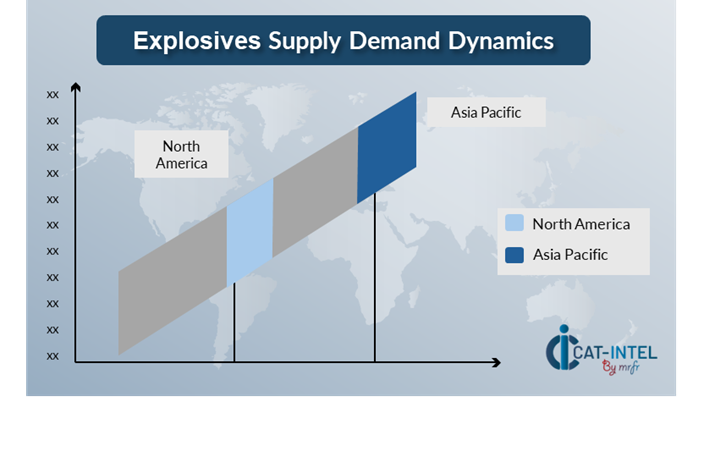
Asia-Pacific: Dominance in the Explosives Market
Asia-Pacific, with major players like China, India, and Japan, is a dominant force in the global explosives market for several key reasons:
- Raw Material Resources: The region has access to a large supply of essential raw materials for explosives production, ensuring steady availability for both local industries and global exports.
- Technological Advancements in Explosives Manufacturing: Asia-Pacific is at the forefront of adopting advanced manufacturing techniques, including automation and safety technologies, which help boost production efficiency and improve safety standards in explosives
- 3. Established Mining and Construction Industries: Countries such as China, India, and Australia have strong mining and construction sectors that drive constant demand for explosives, both locally and for export purposes.
- Comprehensive Explosives Infrastructure: The region has a well-developed infrastructure for producing, storing, and transporting explosives, ensuring smooth supply chain operations and timely deliveries to meet global demand.
- Government Support: Governments in countries like China and India provide incentives like subsidies for manufacturers and policies that support innovation and sustainable practices, strengthening the region’s global competitiveness in the explosives market.
Asia Pacific remains a key supplier for Explosives Market Price Drivers Innovation and Growth.
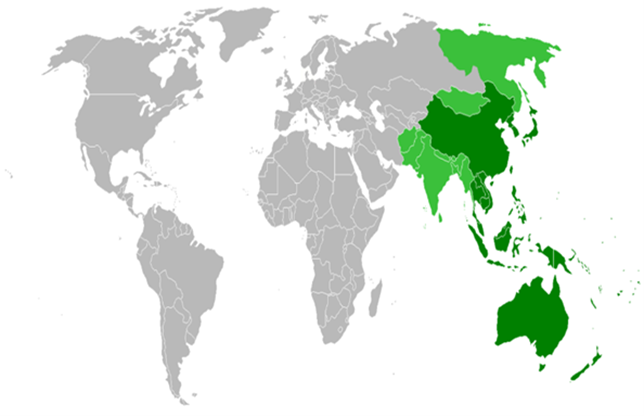
Supplier Landscape in the Explosives Market
The explosives market has a diverse and competitive supplier base, with both global industry leaders and regional players shaping the landscape. These suppliers impact important factors like pricing, product customization, and service quality. Major companies dominate the market by offering a wide range of explosives products, while smaller, specialized suppliers focus on specific industries like mining or construction or offer unique features such as enhanced safety technologies or environmentally friendly solutions.
The supplier network includes both large global vendors and local companies that meet specific regional or industry needs. As demand for more efficient and safer explosives grows, suppliers are focusing on new technologies, improving safety standards, and offering flexible pricing options to adapt to the market’s evolving needs.
Key Suppliers in the Explosives Market Include:
- Orica
- Dyno Nobel
- BASF
- AEL Mining Services
- Hanwa
- Shaanxi Coal and Chemical Industry
- China National Petroleum Corporation (CNPC)
- Maxam
- Yunnan Tin Company
- Zhejiang Materials Industry Group
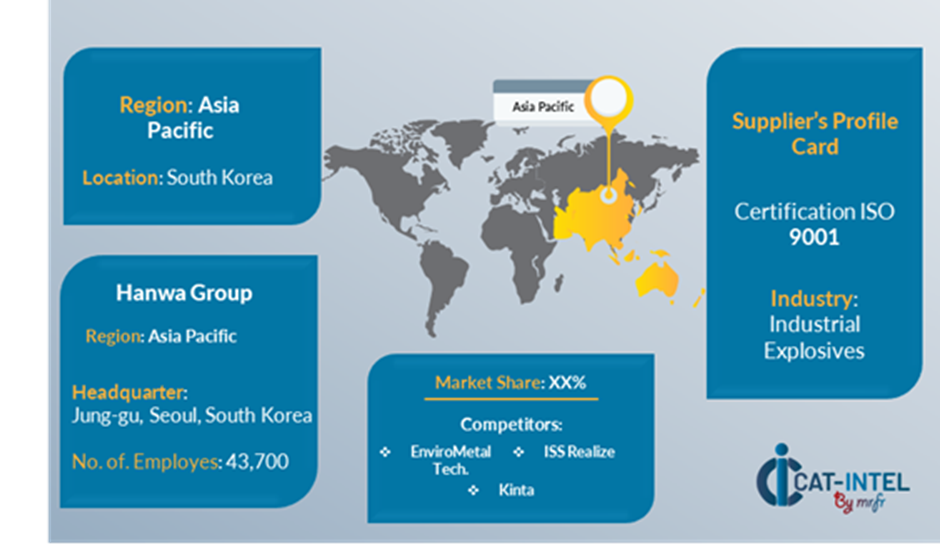
Key Developments Procurement Category Significant Development:
|
Significant Development |
Description |
|
Market Growth |
The explosives market is expanding as industries like mining, construction, defense, and energy increase their demand, leading to higher procurement needs for various explosives products. |
|
Product Innovation |
Companies are introducing new explosives, including more eco-friendly options, high-performance blasting agents, and customized solutions to meet specific industry requirements, creating new opportunities in procurement. |
|
Technological Advancements |
Advancements in explosives production, such as more precise blasting technologies, automation, and improved safety features, are changing procurement strategies by increasing efficiency and safety while supporting sustainable practices. |
|
Global Trade Dynamics |
Changes in international trade policies, like tariffs and trade agreements, are impacting the explosives market. Suppliers are adjusting their strategies to ensure a reliable and cost-effective supply chain, especially in key regions such as Asia-Pacific. |
|
Customization Trends |
As demand for specialized explosives grows, including eco-friendly, high-performance, and industry-specific solutions for sectors like mining and defence, procurement processes are becoming more flexible to meet these needs. |
|
Explosives Attribute/Metric |
Details |
|
Market Sizing |
· · The global Explosives market is projected to reach USD 263.3 billion by, 2035, growing at a CAGR of approximately 5.5% from 2025 to 2035. |
|
Explosives Market Adoption Rate |
By 2025, approximately 65% of explosives companies worldwide are expected to adopt advanced technologies, with a strong shift towards automated and precision blasting solutions for efficiency and flexibility in managing global supply chains within the explosives industry.
|
|
Top Explosives Industry Strategies for 2025 |
The explosives market will concentrate on improving automation and precision blasting technologies, adopting more environmentally friendly solutions, building strategic partnerships, and strengthening supply chains to boost efficiency, sustainability.
|
|
Explosives Process Automation |
By 2025, around 55% of explosives companies are expected to automate routine tasks such as inventory tracking, safety compliance, and logistics management to improve operational efficiency.
|
|
Explosives Process Challenges |
The markets experience intense volatility due to various factors such as price fluctuations, weather conditions, government policy, and currency fluctuations. |
|
Key Suppliers |
Leading Cotton providers include Orica, Dyno Nobel, BASF and AEL Mining Services. |
|
Key Regions Covered |
Prominent regions for Explosives include Asia-Pacific, North America with significant demand in industries, military and consumer fireworks.
|
|
Market Drivers and Trends |
Increased government spending on defence in countries like the USA, China, India, Russia, the UK, and France is expected to drive growth in the explosives market. Companies may invest in explosives firms to access new technologies, expand their product lines, and diversify their portfolios.
|
Frequently Asked Questions (FAQ):
Our procurement intelligence services provide detailed analysis of the explosives supplier market, identifying key providers, evaluating industry trends, and assessing pricing. We offer spend analysis, supplier performance reviews, and sourcing strategies to help secure reliable explosives solutions at competitive prices.
We assist in assessing the TCO for explosives by considering costs related to production, transportation, storage, handling, and regulatory compliance. This comprehensive analysis helps you understand the long-term financial impact of sourcing explosives.
Our risk management services focus on mitigating risks such as supply chain disruptions, regulatory compliance challenges, and safety concerns. We provide strategies to ensure secure, reliable, and cost-effective explosives procurement.
Our Supplier Relationship Management (SRM) services help foster strong partnerships with explosives vendors. We assist in contract negotiations, monitor vendor performance, and ensure compliance with safety and regulatory standards to streamline integration into your operations.
We recommend best practices such as supplier segmentation, performance monitoring, safety compliance checks, and long-term relationship management. These practices help ensure transparency and efficiency in explosives procurement.
Digital tools can enhance explosives procurement by automating supplier selection, optimizing inventory management, and improving compliance with safety regulations. These technologies reduce costs, improve accuracy, and increase operational efficiency.
Our supplier performance management services track key metrics such as delivery time, product quality, and safety standards. These insights ensure reliable supplier performance and help inform future procurement decisions.
We support negotiations by leveraging market intelligence, analyzing pricing trends, and using strategies like long-term contracts and bulk purchasing to secure favorable terms with explosives suppliers.
We provide tools that deliver detailed insights into explosives pricing, supply chain trends, and regulatory changes. These resources help you make informed, data-driven procurement decisions.
We ensure compliance with industry regulations by verifying that suppliers meet safety standards, transportation guidelines, and environmental requirements. This helps maintain regulatory compliance in all procurement activities.
We recommend diversifying supplier sources, building safety stock, and leveraging technology to monitor supply chain risks. These strategies help ensure a steady supply of explosives and mitigate disruptions.
Our tracking solutions monitor key performance indicators such as delivery consistency, product quality, and regulatory compliance. These insights help evaluate long-term supplier reliability.
We focus on sourcing from suppliers who follow environmentally responsible practices, including the use of eco-friendly materials, energy-efficient manufacturing, and adherence to sustainability standards in explosives production.
Our pricing analysis compares supplier rates, monitors market trends, and applies negotiation techniques to ensure cost-effective explosives procurement while maintaining high safety and quality standards.
We recommend partnering with suppliers who prioritize safety by adhering to industry regulations, implementing strict quality control processes, and conducting regular safety audits. This ensures that safety remains a top priority throughout the procurement process.








